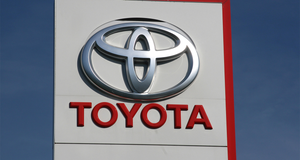Landfill Helps Build BMWs
August 1, 2003
Michael Fickes Business Editor Cockeysville, Md.
WASTE MANAGEMENT INC. (WMI) has been earning a little extra cash by moonlighting with the BMW Manufacturing Corp.
Since April, Houston-based WMI's 4,000-ton-per-day Palmetto Landfill in Spartanburg, S.C., has been supplying landfill gas (LFG) to its neighboring BMW plant to fuel four turbines that generate electricity. Heat produced by the turbines provides the plant with hot water. Overall, the LFG system satisfies approximately 25 percent of the BMW facility's energy needs and 80 percent of its thermal needs.
According to Chris Voell, program manager with the U.S. Environmental Protection Agency's (EPA) Landfill Methane Outreach Program, Washington, D.C., the combined heat and power project generates 5 megawatts of power. “It is … the largest of its kind in the country,” Voell says.
Currently, 340 landfill gas-to-energy (LFGE) projects operate in the United States, according to the EPA. Of those, more than 200 use the methane in LFG to generate electricity, which then is sold to power grids managed by the nation's electric utility companies. Slightly more than 100 LFGE installations generate power used directly for purposes such as manufacturing.
Direct-use LFG projects conserve energy by replacing natural gas or other conventional fuels that would otherwise be burned to generate power. Only a handful of direct-use energy projects are similar to the BMW system, which generates both electricity and heat.
Direct-use methane gas projects generally involve three partners: a company that needs energy; a nearby landfill with a sufficient gas supply; and a developer willing to install a system to move the gas from the landfill to the company's site. Ameresco Energy Services, Framingham, Mass., developed the Palmetto-BMW methane connection and financed the system after establishing a 20-year contract to buy LFG from Palmetto and sell it to BMW. After tapping into Palmetto's gas collection network, Ameresco processes gas by cleaning, drying and compressing it. The company then transports the gas through a 9.5-mile pipeline it constructed.
Once Ameresco delivers the gas to BMW, its equipment compresses the gas and sends it into the electricity- and heat-producing turbine system, which was installed when the BMW plant was built in 1992.
BMW production facilities worldwide usually are built with co-generation energy systems, according to Gary Weinreich, environmental services manager at the plant. But prior to connecting to Palmetto's gas collection system, the facility was not using its co-generating capabilities. “Up until now, it was always cheaper to buy electricity and generate hot water in a conventional boiler,” he says.
Although BMW already had the equipment, modifications were required to burn Palmetto's gas. LFG is approximately 50 percent methane. By comparison, natural gas is more than 90 percent methane. Turbines designed to burn natural gas must be modified to use lower British thermal unit (Btu) LFG.
The Palmetto Landfill incurred no expenses and simply profits from the arrangement. WMI declined to provide financial details.
Ameresco paid the overall costs of the $12 million project, including $1 million to convert the BMW turbines. The company will earn a return on its investment by marking up the gas.
WMI operates 300 landfills across the country, and approximately 69 sell LFG. According to Paul Pabor, director of LFG management for the company, most of these operations involve gas-to-energy plants built by developers on landfill property who sell electricity to utilities. More than a dozen WMI landfills ship gas through pipelines to direct users such as BMW. All earn income from the gas. “It's a little bit of income,” Pabor says. “We have gas that we're flaring, and we're not making any income from it. Projects like these add a little value to the landfill.”
WMI also earns federal tax credits when it sells LFG. Under Section 29 of the Internal Revenue Service (IRS) code, landfills that installed gas collection systems prior to July 1, 1998, can claim credits of about $1 per million Btus on LFG sales.
Additionally, WMI earns public relations credits for turning LFG into a productive and environmentally friendly product. BMW, for example, purchases four-fifths of the 5,000 cubic feet per minute of LFG collected at Palmetto. Because that gas would have been flared and natural gas would have been burned to produce electricity and heat, the system conserves natural gas. BMW estimates the natural gas saved would heat 15,000 homes per year. Another way to summarize the project's environmental benefits is to calculate the carbon dioxide emissions reduction. According to BMW, using Palmetto's gas to fire boilers instead of flares lowers carbon dioxide emissions by the equivalent of 105 million miles of automobile travel — or 4,000 trips around the world.
Extra income, tax credits and good PR — not bad for a moonlighting gig.
You May Also Like


